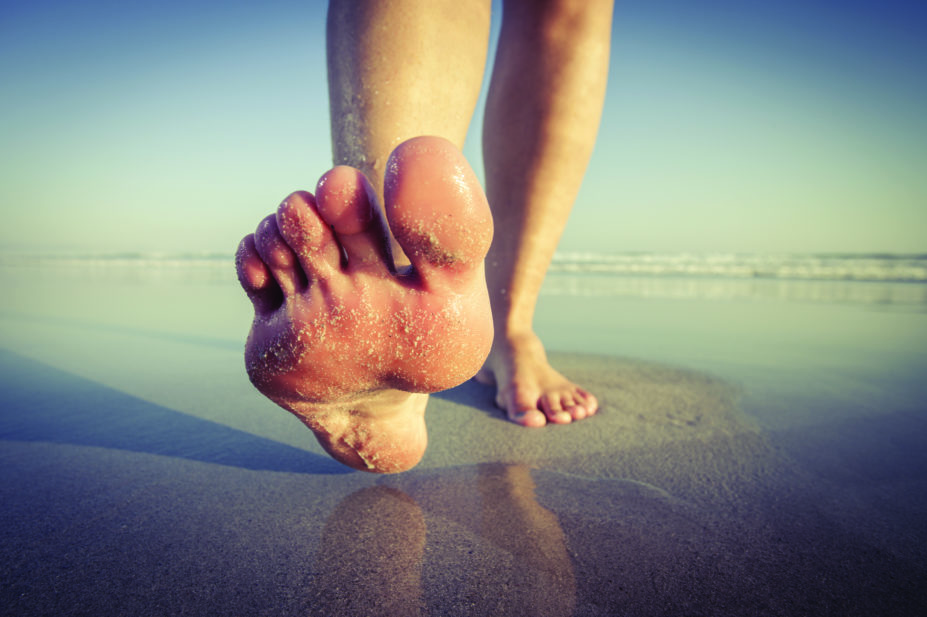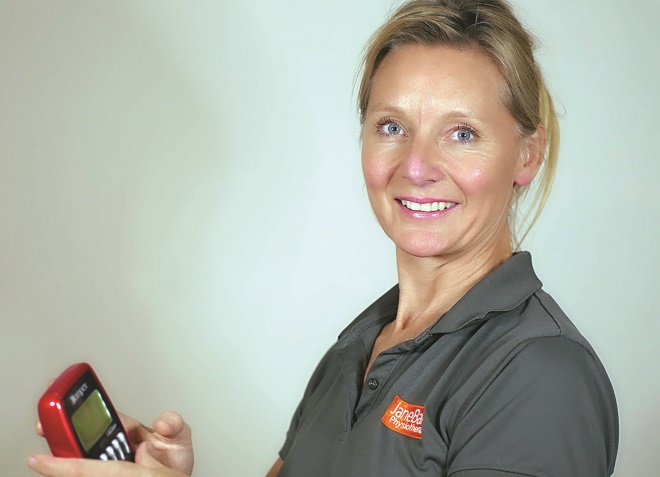
Shutterstock.com
Healthy feet are vital for mobility. In their lifetime, the average person walks approximately 100,000 miles. But all too often, we do not place the same emphasis on looking after our feet as we do on other parts of our body. “Keeping your feet healthy should be part of your daily routine,” says Sarah Curran, principal lecturer in podiatry at Cardiff Metropolitan University. “Just because they are furthest away from your eyes should not mean you neglect them!”
Prevention is better than cure. Once trouble sets in, “a painful foot or leg can be totally debilitating,” warns Richard Leigh, head of podiatry at London’s Royal Free Hospital and a specialist in diabetic foot problems. And because our feet are so essential for keeping mobile and independent, when something goes wrong it can be a psychological strain too.
“Loss of mobility can have a major psychological impact on an individual,” says Jim Bolton, a fellow of the Royal College of Psychiatrists who helps people deal with the psychological consequences of physical illness. “[This] may include loss of independence, loss of normal roles such as parenting or employment, and loss of confidence.” Indeed, psychiatric disorders, especially anxiety and depression, are more than twice as common in people with long-term physical illnesses compared with the general population.
Loss of mobility can have a major psychological impact on an individual
Given how much we rely on our feet, perhaps it is unsurprising that, as Curran points out, “many of us at some point in our lives will experience foot problems”. Almost a third of GP consultations for musculoskeletal problems relate to pain in the foot and ankle, and a total of 2.2 million working days were lost in Britain in 2014–2015 because of work-related disorders of the leg, such as osteoarthritis and tendonitis (although this figure encompasses the whole lower limb, not just the foot).
Better education about foot care is important, especially for people with specific conditions that can affect the feet. Alison Currie, who is 46, has lived with type 1 diabetes since she was 9 years old. A wet corn that got infected while she was working long days away from home led to her having a toe amputated in 2012. “I’d had the condition for so long [the doctors] were surprised I hadn’t lost anything earlier,” she recalls.

Source: Courtesy of Alison Currie
Alison Currie, who has had type 1 diabetes since she was 9 years old, believes her amputated toe could have been avoided if she had been aware of the early symptoms of gangrene developing
But Currie believes the amputation could have been avoided. She says that on leaving the hospital, “when I got the discharge paper it said ‘gangrenous toe’”. She was surprised. Her toe had not been black, which is what she associated with gangrene. “I wasn’t aware of any of the early warning signs of gangrene developing,” she says. “Had I known I would have sought medical attention sooner.”
Although it is impossible to say if things could have been different for Currie, Leigh says that “somewhere in the region of 80% of amputations are preventable given [that] the patient gets to us straight away”.
Advisory service
Currie now works with Diabetes UK to raise awareness of possible foot complications in people with diabetes. She is one of a team of people working to develop an ‘information prescription’ for diabetes foot care. “The idea is that when a doctor enters something on their system the information prescription pops up,” she says. This can then be personalised and given to the patient.
She believes that pharmacists also have a role to play in this. For example, Currie suggests that pharmacists could take advantage of medication reviews to remind people with diabetes to check their feet and to warn them not to buy over-the-counter corn plasters, “because of the lack of sensation the acid within the plaster can do damage that we won’t be aware of”.
Pharmacist Yvonne Muorah, who works at the John Bell & Croyden pharmacy in London, says that she looks out for people with foot problems who have diabetes or other ‘red flags’. Her pharmacy is part of the LloydsPharmacy group. “One of the initiatives that LloydsPharmacy has is promoting foot care in diabetics,” she explains, citing one scheme in which Lloyds gives people with diabetes emollients to help prevent cracks in the skin of the feet, which can lead to infection.

Source: Courtesy of Yvonne Muorah
Yvonne Muorah, a pharmacist at the John Bell & Croyden pharmacy in London, says that she looks out for people with foot problems who have diabetes or other ‘red flags’
“Diabetes affects the feet in several ways,” says Rachel Berrington, a specialist diabetes nurse based in Leicester. She explains that high sugar levels can damage both sensory and motor nerves (neuropathy) and blood vessels (peripheral arterial disease). This means that not only can people with diabetes be at greater risk of injuring themselves because they are less sensitive to pain, heat and cold, and where their joints are in space, they can also be slower to heal because of a poor blood supply.
Leigh says that not everyone with diabetes suffers from nerve and blood vessel damage. “In those cases it’s a matter of getting their feet checked annually,” he says. But those who do have damage or who have previously suffered from ulceration should be seen in a high-risk clinic and have easy access to specialist foot care. “There should be a pathway in place that says if the patient has a problem, they can get to the hospital multidisciplinary team and that should be within 24 hours.”

Source: Courtesy of Richard Leigh
Richard Leigh, head of podiatry at London’s Royal Free Hospital, says that once trouble sets in, a painful foot or leg can be totally debilitating
He thinks it is worth pharmacists being aware of relative risk in people with diabetes. “They should be asking whether the patient knows their risk stratification,” he suggests.
“Pharmacists, like every healthcare professional, have a role when advising about good foot health for people with diabetes, as they are often the first port of call,” says Berrington. She has some specific suggestions for how people with diabetes should care for their feet. “Checking their feet every day is essential,” she says. She also suggests that people “never walk barefoot to prevent standing on anything that could traumatise the foot”. From a similar perspective, Curran adds that it is important to “always check inside the footwear before putting it on”.

Source: Courtesy of Rachel Berrington
Rachel Berrington, a specialist diabetes nurse based in Leicester, says that pharmacists are often the first port of call for people with diabetes
LloydsPharmacy offers a free foot check service, where people with diabetes are advised to have their toenails cut by a podiatrist and to have regular check-up appointments; “almost like how you have a hygienist appointment once every six months,” says Muorah. This is made easier for her patients because there is an integrated podiatry clinic within the pharmacy. “We are able to speak to each other, so if there is a follow-up needed or the patient needs to be referred to a GP, an integrated team decision can be taken,” she says.
Sharing wisdom
There is widespread agreement that this kind of knowledge sharing is important to improving patient outcomes. “The foot and ankle is particularly complex, with often two or three things going on,” says Noelene Davey, a London-based physiotherapist who works in both the public and private sectors. Even the anatomy of the foot is daunting, with 26 bones, 33 joints and more than 100 ligaments, muscles and tendons. “The hand has been a specialty since the 1970s but it’s taken a long time for the foot and ankle to be seen as equivalent,” Davey says.
Davey was one of the founding members of the Association of Foot & Ankle Physiotherapists and Allied Health Professionals, or AFAP, which she set up after she started specialising in foot and ankle in 2009. She felt unprepared by her undergraduate training. “It was probably the hardest thing I’ve ever done,” she says. So she got in touch with some other foot and ankle physiotherapists with the idea of sharing knowledge. They have just had their fifth annual conference and, from that small initial group “we’ve gone up to a membership of more than 700 allied health professionals”, says Davey.
The goal of foot and ankle physiotherapy is to keep patients from going through surgery wherever possible. “In general, surgical intervention is only performed on patients who have pain that has not improved with conservative measures,” Davey says.
Problems in the foot can be roughly divided into those that stem from a systemic illness, such as diabetes or rheumatoid arthritis, and those that are more localised injuries, such as trauma or tendonitis. However, even local problems can have knock-on effects, as Curran points out: “Misalignment of the bones and limited mobility of joints can influence structures further up the body, contributing to pain and symptoms in the knee, hip and spine.”
Misalignment of the bones and limited mobility of joints can influence structures further up the body, contributing to pain and symptoms in the knee, hip and spine
Jane Baker, a foot and ankle physiotherapist at The Gait and Posture Centre, a private clinic in London’s Harley Street, gives the example of a problem with the big toe. No matter what has caused that problem — it could be gout, rheumatoid or osteoarthritis, trauma — “if you have a stiff big toe and particularly if it’s painful you will tend to avoid moving through [it] so you will tend to walk onto the outside of your foot”, she says. This, then, can cause stress on the outside of the knee and the hip. “I will very rarely just treat the foot — I’ll look at the whole body; hip, pelvis, and I’ll look at their posture,” she says.

Source: Courtesy of Jane Baker
Jane Baker, a foot and ankle physiotherapist at The Gait and Posture Centre, says that foot problems can lead to pain and symptoms in the knees and hips
Muorah cites another common problem that affects the toe: ingrown toenails. Often patients who come to her pharmacy with this issue are able to be seen by a podiatrist that same day, “so the patient is relieved of their pain straight away”.
If foot problems are allowed to fester, they can affect mobility and this “can have an impact on weight control or a reduction in cardiovascular health”, says Davey. For some people this is a vicious cycle, as increased weight can itself lead to foot pain, with one study showing that obese adults over 60 years of age were significantly more likely to suffer from foot pain than those with lower BMIs[1]
.
Choosing well
Some things that are particularly emphasised for people with diabetes are lessons we all can learn, such as making sure you choose well-fitting shoes. Davey says that the key is to “fit the shoe to the foot, not the foot to the shoe”. She and others suggest having your feet measured for width as well as length. Or, if you want to get more creative, “stand on a piece of paper and trace around the shape of your foot”, says Davey. “Then place your shoe on top — if you can see any foot tracing lines overhanging the shoe then this shoe is too narrow or not the right shape for you.” Another tip is going shoe shopping in the afternoon after any natural swelling has occurred.
Then there is the question of heels. “High-heeled shoes can lead to an increase in foot pain and the development of painful corns and calluses,” says Davey, referring to a study of just under 100 women between the age of 40 and 66[2]
. However, the study also showed that wearing heels did not seem to lead to any statistically significant increases in deformities or joint disease on x-ray.

Source: Courtesy of Noelene Davey
Noelene Davey, a London-based physiotherapist, says that if foot problems are allowed to fester, they can affect mobility and this can have an impact on weight control or a reduction in cardiovascular health
Baker, while acknowledging that heels do put more pressure on the forefoot, is keen to stress that “everybody has a different type of foot”. Whether looking for sports or dress shoes, she encourages her patients to find what suits them. For example, “you can choose a different heel which is more comfortable for the foot”, she suggests. “You might have a larger surface area heel with platforms so you’re getting that height but you’re not getting [such an] angle.”
If finding the right shoes to support your feet is a struggle, there is always the option of orthotics. These are inserts fitted into the shoe that can help reduce or redistribute pressure in the foot and provide support for correct foot function.
“What is becoming quite significant is that off-the-shelf, pre-fabricated orthoses are just as beneficial as custom-made orthoses,” Curran says. She was involved in a study that analysed the effects of a mass market insole[3]
. Although it was a small sample, the team found that the use of the insole — which is designed to improve the function of the first metatarsophalangeal joint (the big joint of the big toe) — led to a probable increase in walking efficiency as well as comfort.
What is becoming quite significant is that off-the-shelf, pre-fabricated orthoses are just as beneficial as custom-made orthoses
However, Davey warns: “If you wear orthotics or arch supports these will not work properly if your gastrocnemius muscles are tight.” She recommends regular calf stretching.
As well as correct footwear, cleaning and keeping toenails trimmed are important aspects of foot care. Although feet should be cleaned daily, soaking them can destroy the natural oils in the skin and should be avoided. Furthermore, “make sure you dry your feet well and pay particular attention to areas between the toes as this can potentially create athlete’s foot”, says Curran.
Foot care can become more difficult as people get older. Reaching down to cut toenails and clean and moisturise feet can be challenging, and this population is more likely to have underlying conditions, such as diabetes or arthritis. Furthermore, “people often gain weight as they get older,” says Davey. Age UK suggests asking a family member to help with cutting toenails and, if that is not an option, many of the charity’s local organisations offer toenail-cutting services for people over 50. Curran advises against wearing slippers. “They can become sloppy, are unsupportive, and individuals run the risk of tripping and falling over,” she says.

Source: Courtesy of Sarah Curran
Sarah Curran, principal lecturer in podiatry at Cardiff Metropolitan University, says that keeping your feet healthy should be part of your daily routine
Another issue for some older people is a reluctance to seek help if they have foot pain. “Older generations were copers, they just got on with it,” says Baker. She suggests that foot pain should not be seen as an inevitable part of ageing.
Taking responsibility
Ultimately, for outcomes to improve people have to learn how to look after their feet and be quick to come forward and ask for help when they have a problem. “You’ve got to look after your own health,” says Currie.
After all, she knows from her own experience how much of an impact foot problems can have. Since losing her toe, Currie has had to deal with another complication of diabetes, in which the bones of her ankle became displaced and suffered microfractures in what is known as a Charcot joint. This time, the issue has been life changing, limiting her work as a security officer. “Being unable to work full-time in the job that I love is very hard,” she says.
RB provided financial support in the production of this content. The Pharmaceutical Journal retains full editorial control.
UK/SC/0617/0031g
References
[1] Mickle KJ & Steele JR. Obese older adults suffer foot pain and foot-related functional limitation. Gait Posture 2015;42(4):442–447. doi: 10.1016/j.gaitpost.2015.07.013
[2] Borchgrevink GE, Viset AT, Witsø E et al. Does the use of high-heeled shoes lead to fore-foot pathology? A controlled cohort study comprising 197 women. Foot Ankle Surg 2016;22(4):234–243. doi: 10.1016/j.fas.2015.10.004
[3] Curran SA, Davis J, Tozer JL et al. Gait efficiency and the use of Insolia® Flex to promote first metatarsophalangeal joint dorsiflexion. Foot Ankle Online J 2011;4(4):2. doi: 10.3827/faoj.2011.0404.0002


